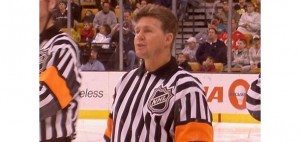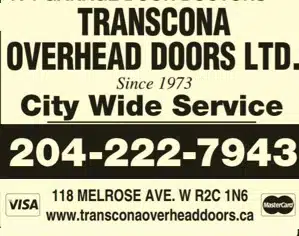The Illegal Curve Hockey Show airs from noon to 3pm on TSN Radio 1290 in Winnipeg. The following interview is transcribed and paraphrased from the latest episode, available directly at IllegalCurve.com. Alternatively, you can subscribe on iTunes and have the podcast automatically sent to you as soon as it becomes available.
On Saturday TSN analyst and former senior NHL referee Kerry Fraser phoned in for an interview with the Illegal Curve Hockey Show.
On the trapezoid rule:
“I really wasn’t in favor of it (when it came in) because I think it penalizes goalies like Martin Brodeur and others that develop a skill, and it’s a tremendous skill-set (to have). Ron Hextall was the first goalie that I can recall who could really pass the puck. I was part of a meeting with the general managers in the 80’s, when they were discussing protection of the goalie. Every general manager agreed that goalkeepers were an endangered species, they were a valuable commodity on their team that couldn’t be easily replaced and they needed special protection. Glen Sather, who was the General Manager of the Edmonton Oilers at the time, was the only one that dissented, he said “if we allow a guy like Ron Hextall to handle the puck without being touched, he handles the puck better than most defensemen in the league.” And that was true. It is a skill that is developed, and most goaltenders are developing that skill, but they are handcuffed because of the trapezoid.”
On the treatment of star players:
“There was never an edict handed down (to protect star players). But of course, star players generally had the puck most of the time, or the puck followed them, and they garnered added attention. Sometimes Mario Lemieux would have two guys on him, and often times three players that would try to check him. Mario Developed a tactic that is really creative and unique, he would have his players assemble in a huddle, and then he would skate into the huddle and shoot out the back door and trap the checkers that were assigned to keep him at bay. It was a great tactic, it was the first time I ever saw it.
The fact that those players bring attention to themselves, and have the puck a lot of times, they are in foul potential. Players have to foul them to contain them, especially in the modern day where we see a lack of restraint and obstruction the referees have been directed since the lockout to call that and remove it from the game.”
On the decline of penalties since the lockout:
“I think it’s a combination of things; first off, we have to give the players credit for developing the learning curve very quickly. There were players pre-lockout, who relied on the clutch and grab and restraint. Once we returned with a complete buy in by players, coaches, general managers and officials the new rules had to be called and a lot of players were flushed out of the league, they couldn’t compete in the faster game. We give them credit for learning, but also have always seen that players will get away with whatever the officials will let them get away with. I think there has been some slippage…It really takes a monitoring process from the officiating department, with each individual referee on what the standard is and that he does remain on the league expected standard.”
On the one rule that needs to be altered:
“The one thing that I would like to see, if it could be changed, is a philosophy and a mindset by players that they must keep their skates on the ice. The rule says if you leave your feet it’s charging. Quite often it’s not called. We’re looking for excuses for the big hit, and that the players skates left the ice at the point of impact, or after impact. When you do that, when your skates leave the ice, all of your energy and velocity is going in an upward motion. When It goes in an upward motion, we’re looking at a high hit, and ultimately contact to the head can and usually will result. I would want to see the players forced to keep their skates on the ice…We want to get this head contact out of the game, the first place to start is keeping the players feet on the ice.”
On the possible return of name-bars on the back of referee’s jerseys.
“I would like to see it back, because there was a personality that each of us brought to the game. I know the modern day philosophy form the head office is that they want the officials to blend in and be more of a vanilla product. I think that may be well in theory that you don’t want to bring attention to the officials. But what it does is damage the relationships with players. A lot of times players would come to me, Shane Doan in particular and say, “What’s the name of your partner tonight, I want to call him by his first name.”
Doan is a player that recognizes success in any industry relies on relationship building, and he would like to be able to have conversations with officials and call them by name, and get to know them a little bit from a professional perspective. That just doesn’t happen anymore when it’s number so and so, with a helmet, a visor, you don’t know who he is and he often doesn’t talk to you.”
The entire interview is available here at Illegal Curve, or subscribe to the podcast on iTunes.
The Illegal Curve Hockey Show airs Saturdays from noon to 3pm on TSN Radio 1290




